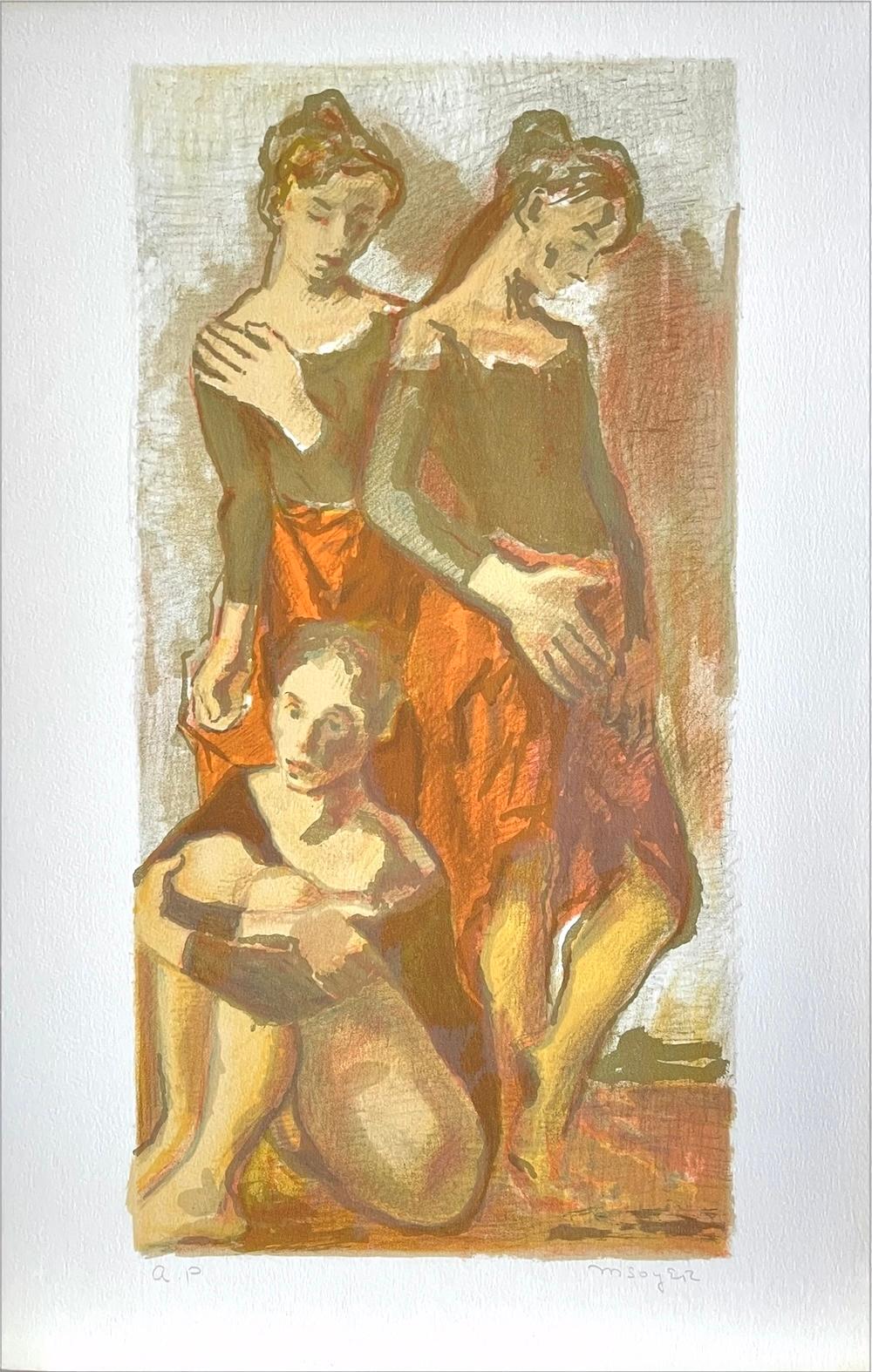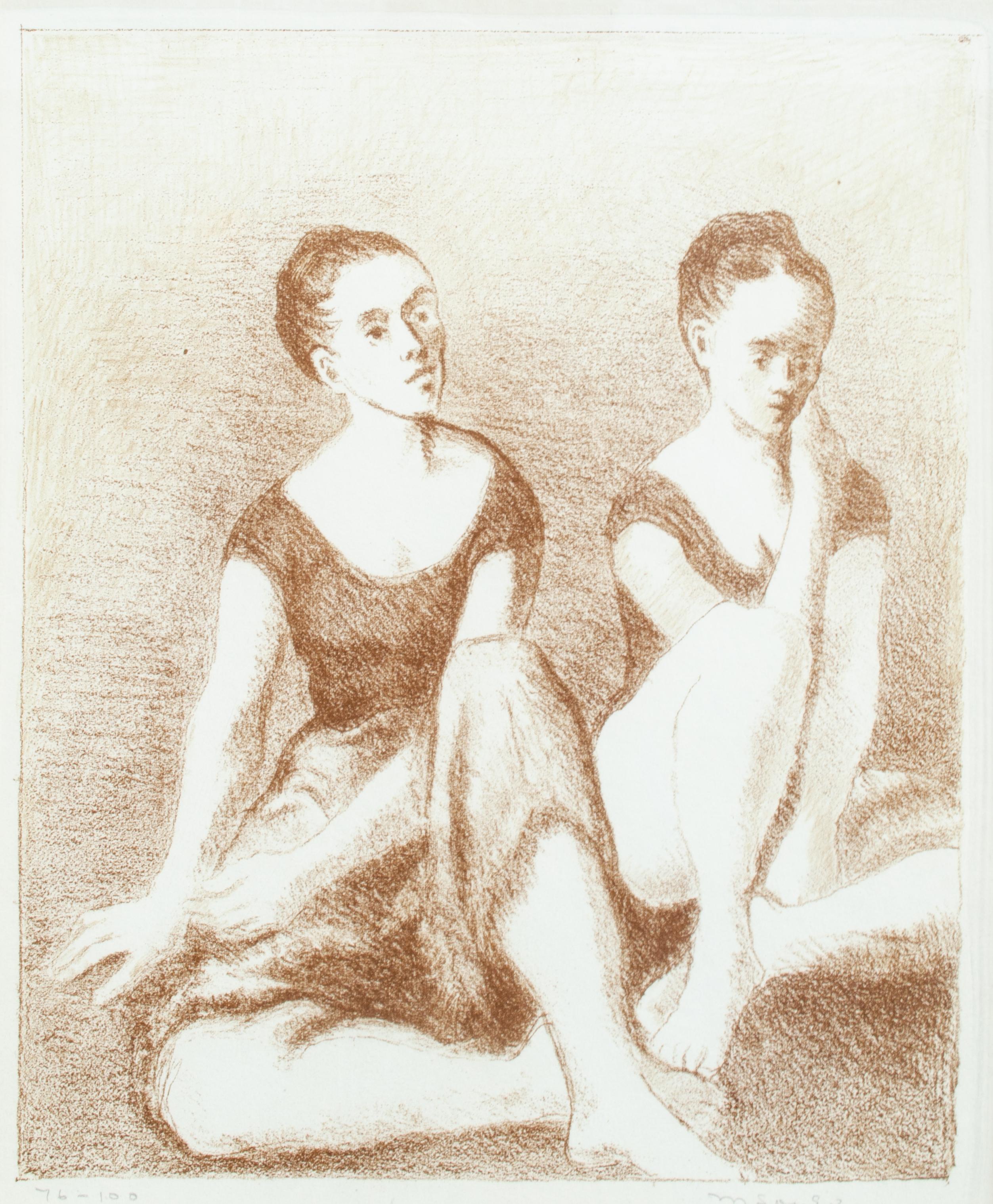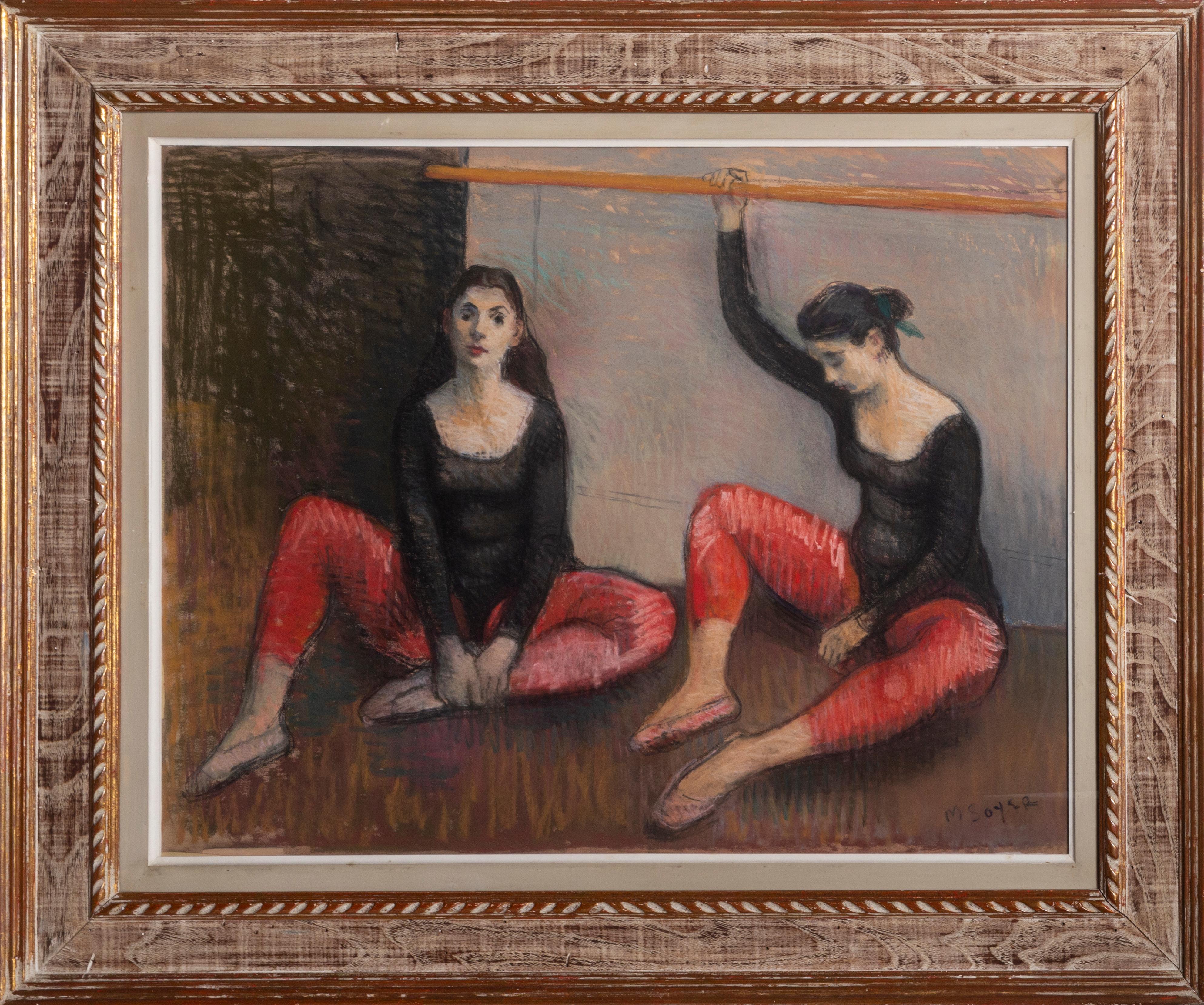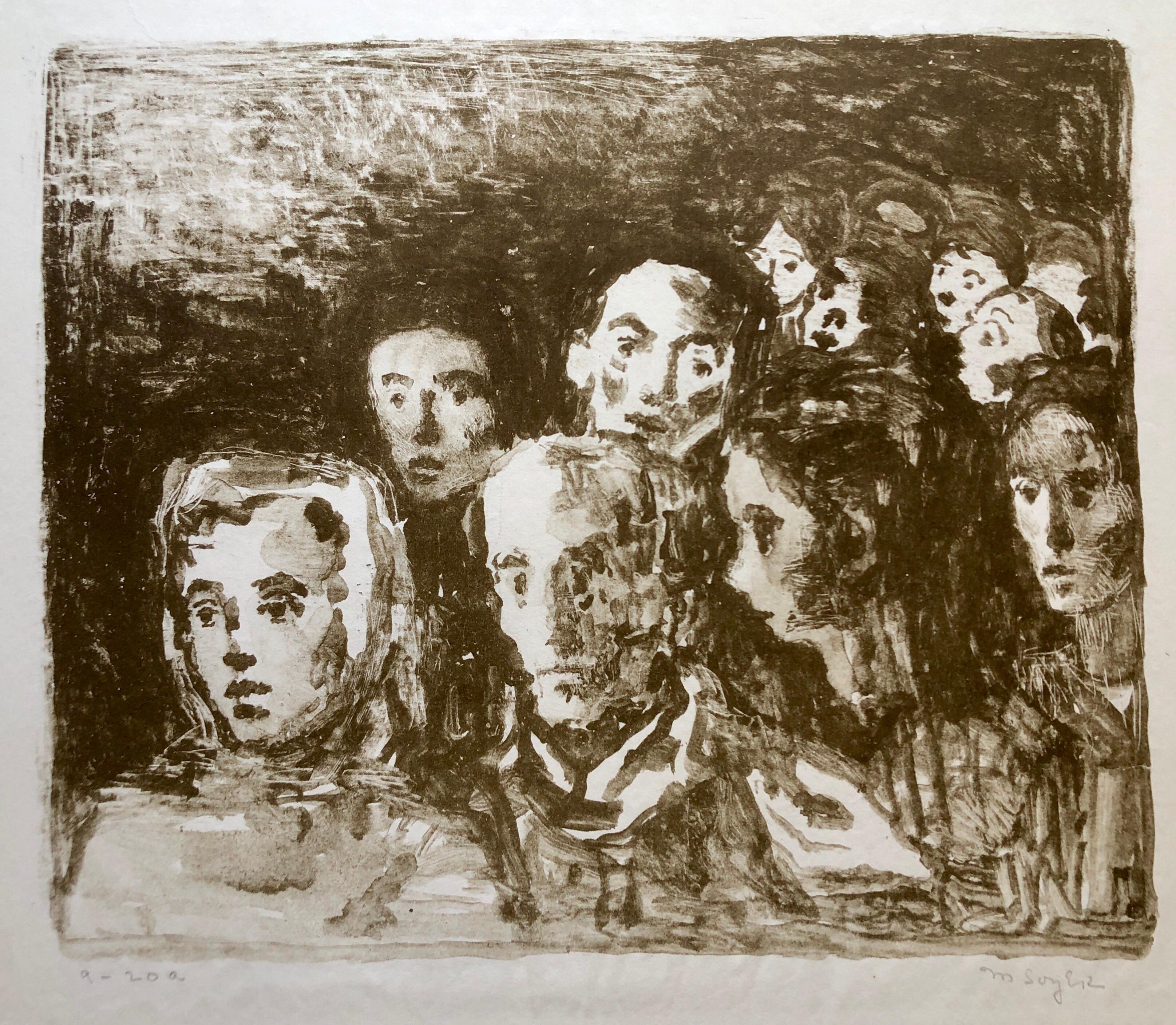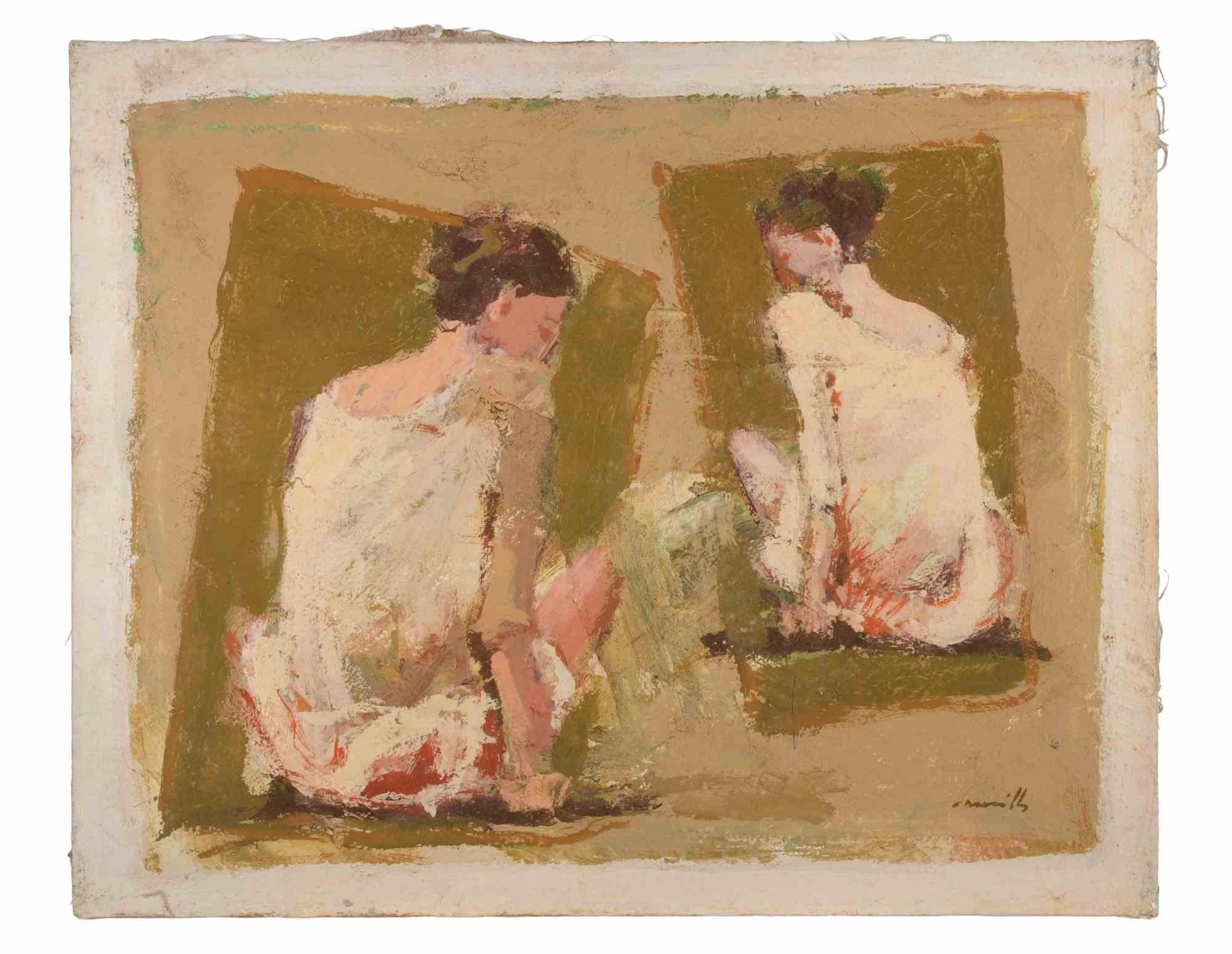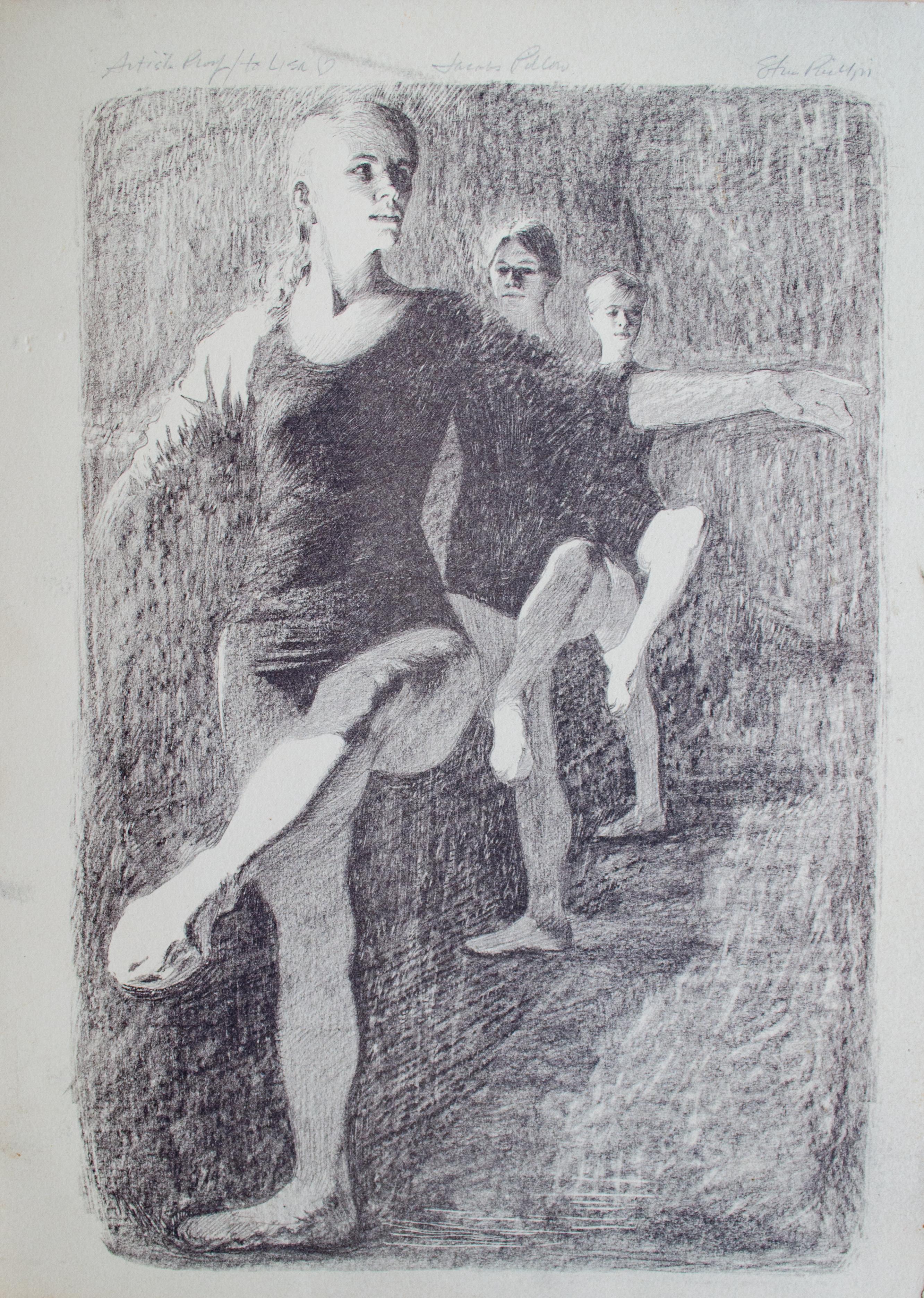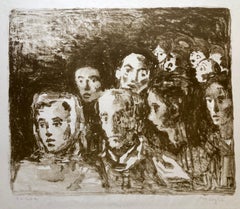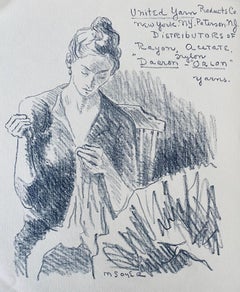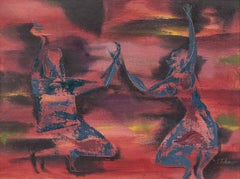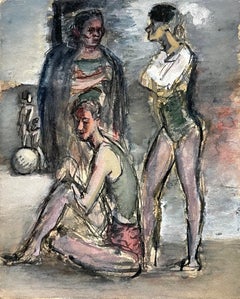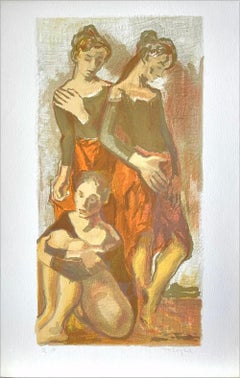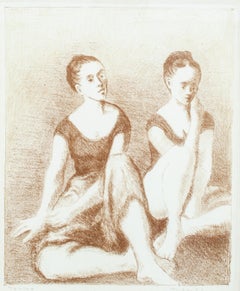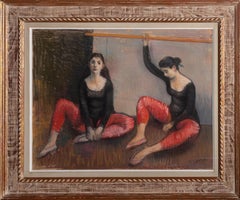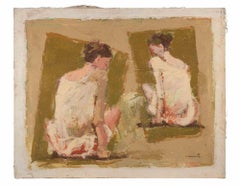Items Similar to Artists Hand Signed and Inscribed "Ballet Dancers" Holiday Greeting Card
Want more images or videos?
Request additional images or videos from the seller
1 of 2
Moses SoyerArtists Hand Signed and Inscribed "Ballet Dancers" Holiday Greeting Card
$550
£419.19
€479.16
CA$773.82
A$847.69
CHF 446.19
MX$10,117.41
NOK 5,687.81
SEK 5,199.52
DKK 3,579.24
About the Item
This piece a holiday card with hand painted print by the Social Realist artist Moses Soyer. Here, the artist depicts the figure of a dancer assuming different ballet poses and works in a very intimate scale, reflecting the delicate nature of ballet. Text on the piece reads: To Rina
Moses Soyer (December 25, 1899 – September 3, 1974) was an American social realist painter. Soyer was born in Borisoglebsk, Russian Empire, in 1899. His father was a Hebrew scholar, writer and teacher. His family emigrated to the United States in 1912. Two of Soyer's brothers, Raphael (his identical twin) and Isaac were also painters. Soyer's wife, Ida, was a dancer, and dancers are a recurring subject in his paintings. Soyer studied art in New York, first at Cooper Union and later at the Ferrer Art School, where he studied under the Ashcan painters Robert Henri and George Bellows. He had his first solo exhibition in 1926 and began teaching art the following year at the Contemporary Art School and The New School. He died in the Chelsea Hotel in New York while painting dancer and choreographer Phoebe Neville.
The Brooklyn Museum, the Detroit Institute of Arts, the Hirshhorn Museum and Sculpture Garden (Washington, DC), the Honolulu Museum of Art, the Metropolitan Museum of Art, the Museum of Modern Art (New York City), the Philadelphia Museum of Art, The Phillips Collection (Washington, DC), the Walker Art Center (Minneapolis, Minnesota), and the Whitney Museum of American Art (New York City) are among the institutions holding works by Moses Soyer. The untitled painting in the collection of the Honolulu Museum of Art is an example of his intimate and psychologically penetrating portraits of ordinary people, for which he is best known.
- Creator:Moses Soyer (1899-1974, American)
- Dimensions:Height: 6.5 in (16.51 cm)Width: 5 in (12.7 cm)
- Medium:
- Movement & Style:
- Period:
- Condition:toning to paper.
- Gallery Location:Surfside, FL
- Reference Number:1stDibs: LU38211841922
About the Seller
4.9
Platinum Seller
Premium sellers with a 4.7+ rating and 24-hour response times
Established in 1995
1stDibs seller since 2014
1,846 sales on 1stDibs
Typical response time: 1 hour
- ShippingRetrieving quote...Shipping from: Surfside, FL
- Return Policy
More From This Seller
View AllSocial Realist Lithograph Moses Soyer WPA Artist Hudled Refugees
By Moses Soyer
Located in Surfside, FL
Moses Soyer (December 25, 1899 – September 3, 1974) was an American social realist painter. Soyer was born in Borisoglebsk, Russian Empire, in 1899. His father was a Hebrew scholar, writer and teacher. His family emigrated to the United States in 1912. Two of Soyer's brothers, Raphael (his identical twin) and Isaac were also painters. Soyer's wife, Ida, was a dancer, and dancers are a recurring subject in his paintings. Soyer studied art in New York, first at Cooper Union and later at the Ferrer Art School, where he studied under the Ashcan painters Robert Henri and George Bellows. He had his first solo exhibition in 1926 and began teaching art the following year at the Contemporary Art School and The New School. He died in the Chelsea Hotel in New York while painting dancer and choreographer Phoebe Neville.
He was included in the show “American Modernism – Paintings from the Dr. and Mrs. Mark S. Kauffman Collection,” along with 30 leading masters of American modernism, which captured the essence of a revolutionary era...
Category
Mid-20th Century American Realist Figurative Prints
Materials
Lithograph
Social Realist Original Lithograph Advertisement Moses Soyer
By Moses Soyer
Located in Surfside, FL
Moses Soyer (December 25, 1899 – September 3, 1974) was an American social realist painter. Soyer was born in Borisoglebsk, Russian Empire, in 1899. His father was a Hebrew scholar, ...
Category
Mid-20th Century American Realist Figurative Prints
Materials
Lithograph
Israeli "Inbal Dancers at Midnight" Modernist Dance painting
By Joseph Wolins
Located in Surfside, FL
Genre: Expressionist
Subject: Figures
Medium: Oil
Surface: Board
Country: United States
Dimensions: 18" x 24"
Dimensions w/Frame: 23 1/4" x 29 1/2"
Joseph Wolins
1915-1999
Wolins ...
Category
Mid-20th Century Modern Figurative Paintings
Materials
Oil
Simka Simkhovitch WPA Artist Painting Gouache American Modernist Beach Scene
By Simka Simkhovitch
Located in Surfside, FL
Simka Simkhovitch (Russian/American 1893 - 1949)
This came with a small grouping from the artist's family, some were hand signed some were not.
These were studies for larger paintin...
Category
1930s American Modern Nude Paintings
Materials
Gouache, Board
Dancing Figures, Oil on Board
By David Rosen (b.1912)
Located in Surfside, FL
DAVID ROSEN
Toronto, Canada, b. 1912, d. 2004
Painter David Rosen emerged onto the art scene while the country was wrought with unimaginable economic turmoil. Like most other America...
Category
20th Century Modern Figurative Paintings
Materials
Oil, Board
Apeles Fenosa Spanish Sculptor Mourlot Lithograph Abstract Expressionist Figures
By Apelles Fenosa
Located in Surfside, FL
This is from a hand signed, limited edition (edition of 125) folio or full page lithographs some having a poem verso. The individual sheets are not signed or numbered. This listing ...
Category
1970s Expressionist Figurative Prints
Materials
Lithograph
You May Also Like
THREE BALLET DANCERS Signed Lithograph, Women, Dance Rehearsal, Khaki, Orange
By Moses Soyer
Located in Union City, NJ
THREE BALLET DANCERS is an original hand drawn lithograph by Moses Soyer, the renowned Russian-born American realist painter, draftsman, and printmaker. THREE BALLET DANCERS was hand printed on archival Arches printmaking paper, 100% acid free, signed in pencil by Moses Soyer. THREE BALLET DANCERS depicts a sensitive, realistic portrait of three young female ballet dancers, all dressed in dance rehearsal...
Category
1970s Realist Portrait Prints
Materials
Lithograph
Seated Dancers Litho by Moses Soyer
By Moses Soyer
Located in New York, NY
Moses Soyer (New York/Russia, 1899-1974)
Untitled (dancers), mid-20th century
Lithograph
Sight: 16 1/2 x 14 3/4 in.
Framed: 26 x 23 1/2 x 1 in.
Edition 76 of 100
Numbered lower left...
Category
Mid-20th Century Modern Portrait Prints
Materials
Lithograph
Dancers at the Barre, Pastel by Moses Soyer
By Moses Soyer
Located in Long Island City, NY
Dancers at the Barre
Moses Soyer, American (1899–1974)
Date: circa 1950
Pastel on paper, signed lower right
Size: 22 x 28 in. (55.88 x 71.12 cm)
Frame Size: 30.5 x 36 inches
ACA Galleries...
Category
Mid-20th Century American Realist Figurative Paintings
Materials
Pastel
Price Upon Request
Ballerinas - Oil Painting by Franco Marzilli - 1970s
By Franco Marzilli
Located in Roma, IT
Oil on canvas realized by Franco Marzilli (1934-2010) in 1970s.
Hand signed lower right.
Very good condition.
Franco Marzilli was born in Rome in 1934. He received his first artis...
Category
1970s Contemporary Figurative Paintings
Materials
Oil
Original Stan Phillips Lithograph of Ballerinas, c. 1970
Located in New York, NY
Stan Phillips (American, 1923-2012)
Jacob's Pillow, c. 1970
Lithograph
14 7/8 x 10 7/8 in.
Signed and inscribed
Phillips was born in Brooklyn, New York and spent most of his young l...
Category
1970s American Modern Figurative Prints
Materials
Lithograph
original lithograph
By Moses Soyer
Located in Henderson, NV
Medium: original lithograph. This lithograph was printed in 1954 for the "Improvisations" portfolio, published by the Artists Equity Association of New York on the occasion of the 19...
Category
1950s Prints and Multiples
Materials
Lithograph
More Ways To Browse
Edgar Degas Lithograph
Framed Wpa Prints
Hablot Knight Browne
Henry Moore On Sale
Henry Moore Reclining Figure
Jiang Tiefeng
Leroy Neiman Serigraphs
Marc Chagall Flowers
Max Klinger On Sale
Mucha Documents Decoratifs
Murakami Skull
Obey Posters
Picasso 1968 Prints
Picasso 347
Picasso Cat
Picasso Femme Au Chapeau
Pierre Hautot
Pink Chagall
